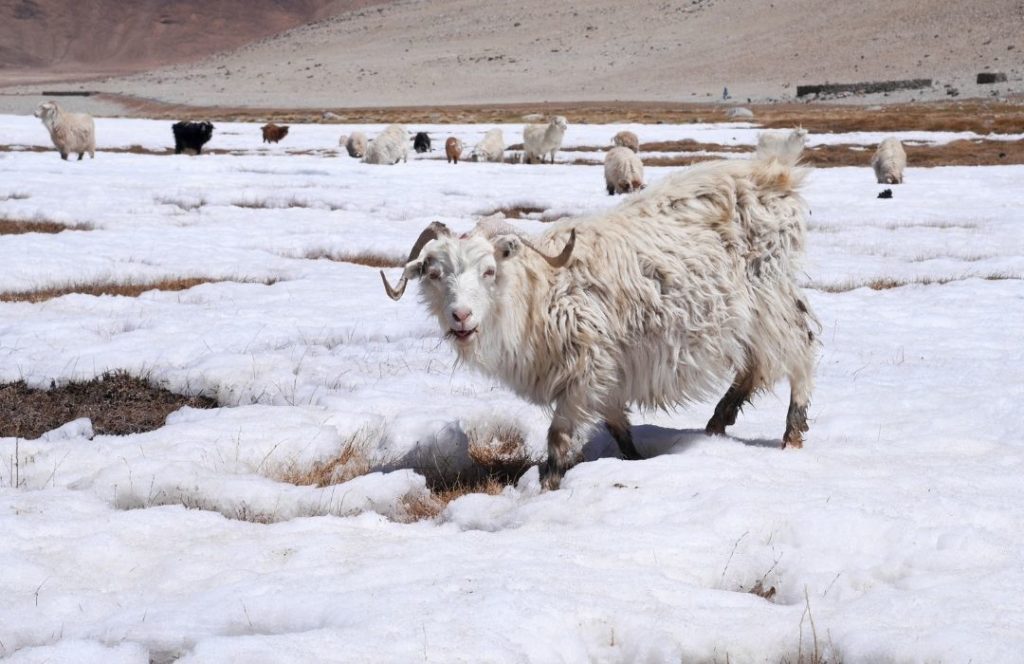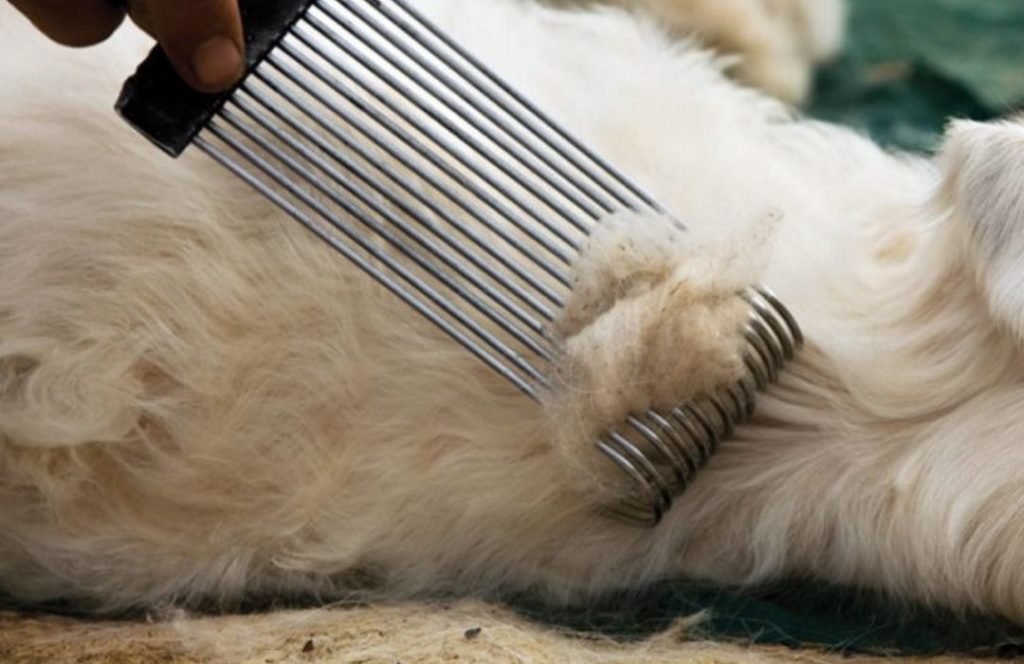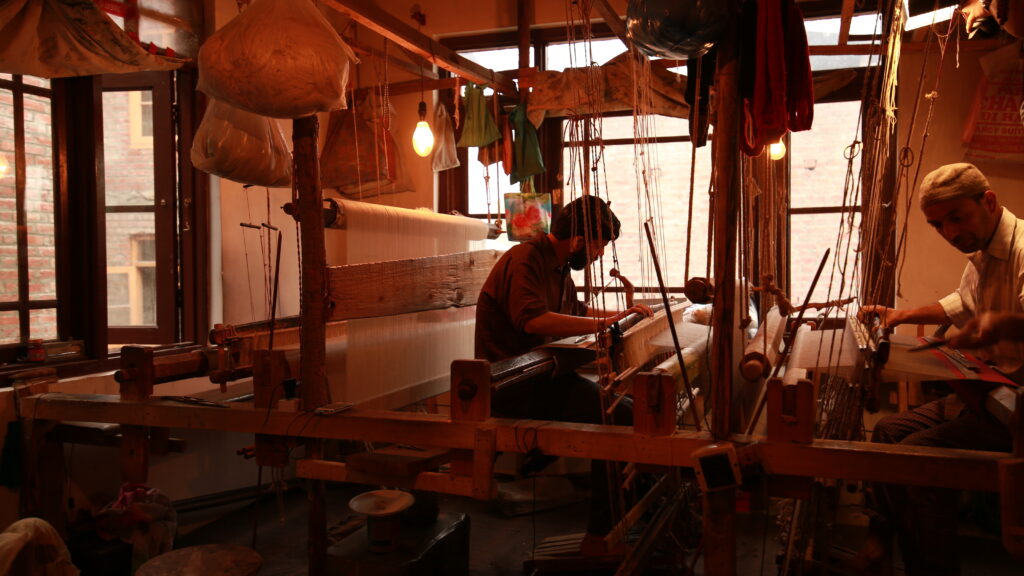Feathery light, immensely warm, and extraordinarily soft, Cashmere is a luxury, which has luckily been made available to the masses since the 15th century. Even though for the first few centuries, it was only affordable by the rich, royals, and the much affluent individuals, now it has been made easier to shop for every single admirer of its timeless grace. Even though Cashmere comes from one of the rarest species of goat, and is a luxury animal hair, it has been processed into opulent Cashmere wraps, which are as resplendent as they are comfortable.
What is Cashmere?
Cashmere is an animal hair variety. It grows on the body of a rare goat species, which is found roaming around the Himalayan range which stretches across the northeastern portion of India. This range spreads across nations and covers nations like India, Pakistan, Afghanistan, China, Bhutan, and Nepal. As a result, the Cashmere goat is found in all these nations (over their portion of the Himalayas), and hence all these nations produce Cashmere.
Cashmere grows as an undercoat on the bodies of all these goats that are spread over a wide range in the Himalayas. It keeps the goats warm, as the temperature around the mountain peak remains brutally cold in winter.
Which is the best Cashmere?

While almost 5 to 6 nations produce Cashmere, it is Cashmere from Ladakh that is the best. And even though it produces the least quantity of Cashmere around the world, and China and Mongolia lead the production by producing 90% of the total Cashmere in the world, Cashmere from Ladakh has a different quality, finesse, and grace. Ladakh produces less than 1% of the total world’s production, but Cashmere wraps from this picturesque valley are worth everything that is given in exchange for it.
Also read: WHERE DOES PASHMINA COME FROM?
Kashmiri Cashmere wraps
Ladakh region constitutes a part of Kashmir valley and lies to the eastern side of Jammu and Kashmir. It is this scenic yet a quaint place that houses the Cashmere goat over an area called Changthang. Changthang is a plateau that is over 14000 feet above sea level. This plateau is home to Cashmere goats that produce the best Cashmere in the world. It is the start of the winter season when Ladakhi Cashmere goats grow fine hair over their underbelly, neck, ears, and other parts of their body in small quantities. This survives them through the harsh winter season when temperatures fall to minus 40 degrees C.

Post-winter season, as soon as Spring arrives in March, the goat goes through hormonal changes in its body. This is the moulting season for goats, and hence the animal loses large portions of this fine hair. Come spring, the rest of the portion of this warm hair makes the goat further uncomfortable, and it rubs its body against coarser surfaces. Cashmere is therefore found around bushes, stones, rough walls, and other areas where the goats spend time. This is collected, and if any hair is left on the body of the goats, it is combed off gently using specialized combs and tools. This is the wool used to make luxury Cashmere wraps
Making Cashmere wraps
Even Though Ladakh produces the world's finest Cashmere, but does not process it due to a lack of infrastructure and labour. But nature has blessed the valley of Kashmir with both. Since the 13th century, Kashmir has excelled in the processing of Cashmere and producing Cashmere wraps in the most meticulous way. It was a Persian saint who discovered Cashmere in Ladakh and presented Socks made from this fine wool to the then-king of Kashmir. The king ordered processing units of Cashmere to be set up, and since then there has been no turning back. In fact, it is Kashmiri Cashmere that is used to make the world-famous Pashmina Shawls
Processing Cashmere
As soon as wool from Ladakh arrives, it is sent for cleaning. The animal roams in the mountains, and hence a number of foreign materials are found attached to it. Soil, vegetable wastes, feathers, and guard hair, all have to be separated from actual Cashmere. This is done by the womenfolk of Kashmir. They start with the cleaning and sorting of the hair and start spinning the hair into fibre. The fibre is just 12 to 16 microns in diameter and is one of the finest in the world.

Next comes the weaving process. One or two men sit across a handloom and weave these newly processed threads by womenfolk from their own families. The weavers keep weaving the threads till these are converted to fabric. These fabrics can be shawls, scarves, or wraps. This is the end of preparing a solid Cashmere wrap, which can further be sent for any type of embellishment. Cashmere wraps can be printed, patterned, laced, embroidered, or Swarovski studded.
What is the best Cashmere wrap?
Undoubtedly, the best Cashmere wrap is the one, handcrafted in Kashmir, whose raw material comes from Ladakh. It is completely made from manual efforts.
- From its acquisition to being completed, a Cashmere wrap is handmade and all its processing is physical. There is no inference of machines. This results in Cashmere wraps being special. These accessories are fine, beautiful, sustainably made, exceptionally warm, soft and lightweight.
- These are perfect travel partners. They save one from carrying those thick and heavy shawls made from other types of animal produce.
- Cashmere is timeless. The wraps are versatile, and we have one for everyone. For the minimal fashion lovers, there are solid wraps, striped and meagerly printed wraps. But for the lovers of lavish accessorising, Cashmere wraps are heavily embroidered, or handwoven in Kani style.
- Apart from being immensely alluring, these are perfect to skedaddle the freezing winter experience, and keep warm.
- Kashmiri Cashmere wraps are not itchy or allergy causing. These are super soft for the skin, and one can wear these all day long.
- Kashmiri Cashmere wrap weavers and spinners are underprivileged people. Hence these wraps help empower this immensely skilled community and add value to their lives.
Also read: ARE THERE DIFFERENT GRADES OF CASHMERE?